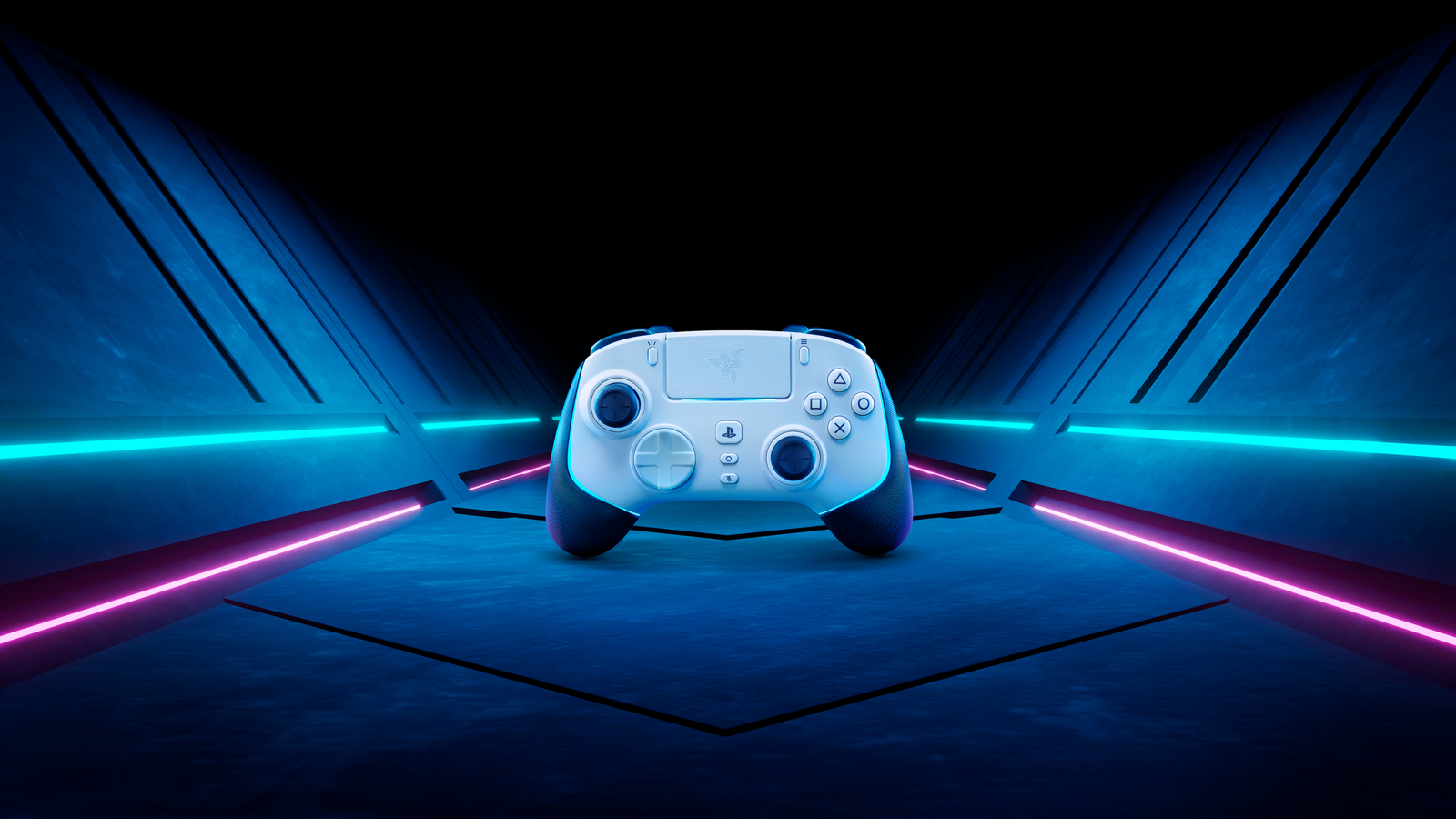We’ve all been there: you’re on track to win a match of Call Of Duty or Fortnite, only to be outgunned at the last minute by a teenager with Spider-Man-esque reaction speeds.
Should you throw your PlayStation controller out the window in anger, you may want to replace it with one of the increasing number of “pro” controllers on the market.
Their rise in the gaming hardware world has been meteoric, with the range of high-tech alternatives to default gamepads growing year-on-year.
Sony enters the playing field later this month with its Edge controller for the PlayStation 5 (PS5) – coming in at a whopping £210, which is a darn sight more than the already pricy standard pad at £60.
Gaming giant Razer’s own new PS5 controller, the Wolverine V2 Pro, comes in at an even heftier $250 (£208).
So why would you want to spend quite so much?
Ali Homayounfar, lead designer on the Razer gamepad, explained that they are designed to give you an edge in those split-second situations.
He told Sky News: “They’re mainly used for shooting games – basically, you want to keep your thumbs on the thumbsticks at all times.
“Say you’re getting shot at – if you take your thumb off the right stick, you won’t be able to run left and right, and you’ll be shot and killed.”
Taking your thumb off the right stick, traditionally used to turn a character’s view and adjust aim, to press the jump or reload button, can cause the player to lose mobility and be vulnerable to enemies.
In a bid to alleviate the issue, pro controllers have adopted paddles on the back, allowing the player to keep their thumbs on the joysticks while simultaneously performing other actions.
The Wolverine V2 Pro also breaks tradition with the design of its joystick placement – a first for a PlayStation pad, bringing it in line with the offset layout of Microsoft‘s Xbox.
“We did a lot of studies and some PlayStation and pro players prefer the offset sticks,” Mr Homayounfar said.
The developers at Razer were “surprised and very happy” that Sony approved the deviation.
“Every other PlayStation controller out there is going to have the thumbsticks in the centre,” Mr Homayounfar said.
“So it’s a nice differentiation for us, too. We’re the only version of that.”
More PlayStation news:
How man without sight could play one of 2022’s biggest games
Razer and Sony’s pro pads follow in the footsteps of Microsoft’s Elite controller for the Xbox.
The company’s flagship gamepad is incredibly customisable, allowing players to adjust the resistance of triggers, replace sticks, and remap buttons.
Microsoft also broke new ground back in 2018 with its adaptive controller, designed to meet the needs of gamers with limited accessibility, and Sony announced its own at CES this week.
More Xbox news:
Microsoft’s Call Of Duty takeover challenged
Even the Nintendo Switch has had the pro treatment, including the recent release of the 8BitDo Ultimate Controller, which boasts many of the features of similar pads for the Xbox and PlayStation consoles.
It comes as Nintendo faces continued scrutiny over the performance of its own Joy-Con controllers, which are notorious for “drifting” – when the console registers movement even though the joysticks are not in use.
Nintendo is repairing faulty controllers free of charge, but it’s an issue that has persisted even after the release of the premium Switch OLED console.
That means the market is rife for an all-singing-all-dancing gamepad that fixes the factory faults.
More Nintendo news:
New Pokemon games set sales record
But while Joy-Con replacements may be free, it is clear that pro controllers do not come cheap.
As gamers take step to save money during the cost of living crisis, is the market sustainable?
“The demand’s still there, for sure,” said Mr Homayounfar.
“People are still excited for gaming and are still willing to spend the money for it.
“It’s a fun investment, it’s a passion for a lot of people.”
Whether they make a big different to your Warzone or Fortnite scores likely depends on your skill level, but they do improve on default gamepads, and could mean the difference between life and virtual death.









